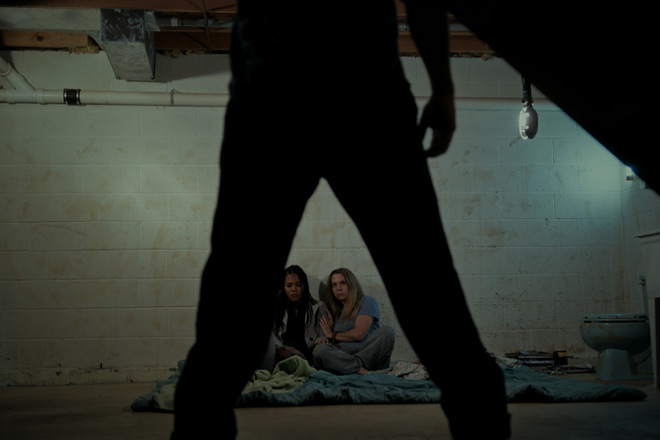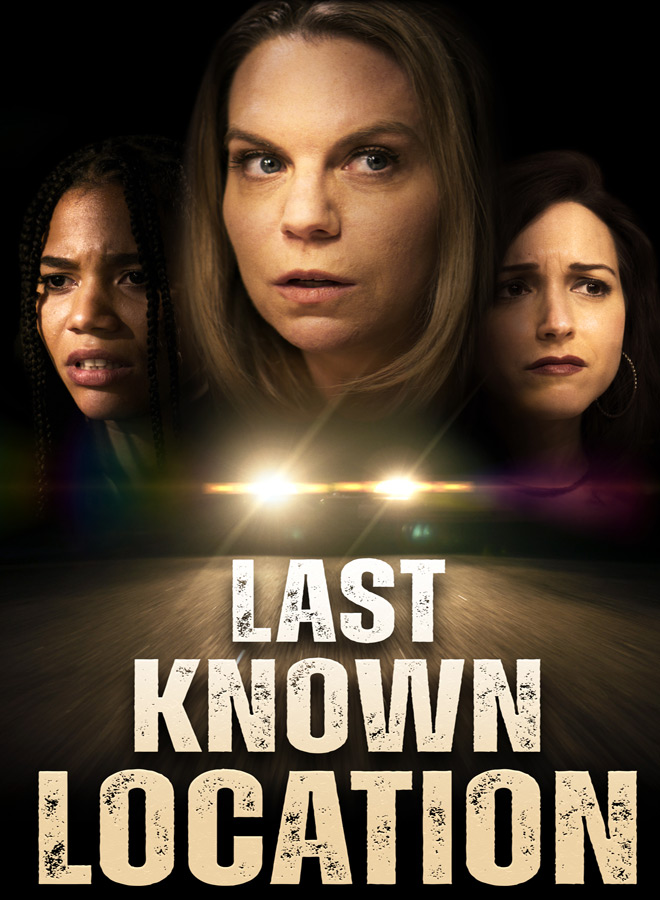How do three strangers, abducted without explanation, survive when all hope seems lost? Last Known Location delves into the mysterious disappearances of three women and their fight to endure a seemingly impossible situation. As detectives struggle to uncover the truth, the women’s bond becomes their only chance at survival. Directed by Danny Donnelly, in his feature debut, and written by Aimee Theresa (Certifiable series, The Woman in the Room 2023), who also stars as Callie, the film’s cast also includes Sophia Lucia Parola (The Arrangement 2020, Shelby Oaks 2024) as Danay, and Jennifer M. Kay (Hollywould 2019, The Arrangement, 2024) as Marly.
Available to stream on November 15, 2024, through Quiver Distribution, Last Known Location presents an undeniably chilling premise – a terrifying scenario for its female characters that could have delivered a deeply suspenseful and emotionally gripping story. The film attempts to blend psychological tension with emotional depth, sprinkling in light character development and aiming to build Horror-like intensity. However, the execution falls short, with uneven pacing and underwhelming storytelling that dilute the impact. What could have been a taut, nerve-wracking narrative instead feels fragmented and lacking the cohesion needed to fully engage the audience.

Audiences should be cautioned that this film warrants a trigger warning for depictions of sexual assault. The narrative devotes an excessive and gratuitous amount of focus to the kidnapper repeatedly assaulting the women, a choice that feels unnecessary and risks overshadowing the story’s intent. While this approach may have been intended to leave a lasting impact, the repetitive emphasis comes across as distasteful and alienating. The time spent on these scenes could have been better utilized to expand on the characters’ backstories or even delve deeper into the psychology and motives of the kidnapper, adding depth and nuance to the narrative instead of relying on shock value. At one point, it seemed that the repeated assaults were used in the story to convey the passage of time which seems incredibly inappropriate, as well as bringing the movie’s pace to a crawl. Perhaps to make the audience suffer with the women on screen?
Despite these missteps, Last Known Location does make an effort to offer glimpses into the lives of Callie, Danay, and Marly, shedding light on their struggles and histories. These moments, while brief, serve primarily to establish the foundation for their connection and mutual care. Through shared experiences of hardship and vulnerability, the women begin to bond in their dire circumstances, creating an emotional thread that ties their arcs together. However, the depth of these backstories feels surface-level, leaving much to be desired in terms of character development. A deeper exploration of their lives and motivations could have added emotional weight to their connection, making their journey together more impactful and resonant.
Additionally, some of the dialogue between the characters feels unnatural, as if the words are delivered with mismatched energy or lack emotional conviction. In particular, there’s a scene where an excessive amount of expletives are used, seemingly in an attempt to make the characters appear tough or edgy. However, the sheer volume of profanity feels forced and overdone, making the characters come across as caricatures rather than authentic people.

Unfortunately, one of Last Known Location’s most glaring missteps lies in its use of music. The tension it strives to build is frequently undermined by a low-budget score that feels more suited to a Lifetime movie than a psychological thriller. While such music might add charm to a romantic, low-budget holiday film, here it completely disrupts the atmosphere, pulling the viewer out of key moments of suspense. This tonal mismatch not only diminishes the impact of pivotal scenes but also highlights the film’s struggle to establish a consistent identity. Instead of amplifying the story’s emotional stakes, the music distracts, leaving moments that should be chilling or poignant feeling awkward and unpolished. It is a critical flaw in a film that heavily relies on atmosphere to drive its narrative.
In terms of cinematography, the film does offer some visually compelling moments, particularly through its use of creative transitional shots. The overall visual aesthetic leans toward gritty and raw, which effectively complements the dark and unsettling tone of the story. However, while these elements showcase some technical prowess, they often feel underutilized, as the uneven pacing and lack of cohesion in the storytelling diminish their potential impact.
Last Known Location has a premise primed to be gripping and emotionally charged, but its execution ultimately falls short of its potential. The film is hampered by slow pacing, underdeveloped characters, and technical choices that detract rather than enhance. The excessive focus on sexual violence, paired with a misaligned musical score, undermines both the suspense and emotional resonance it aims to deliver. Despite moments of gritty cinematography and glimpses of meaningful character connection, these highlights are overshadowed by the film’s inability to weave its elements into a cohesive and engaging narrative. For viewers drawn to the concept, it might be worth a watch, but those seeking a truly impactful thriller may find themselves disappointed. That is why Cryptic Rock gives Last Known Location 1 star out of 5 stars.






No comment